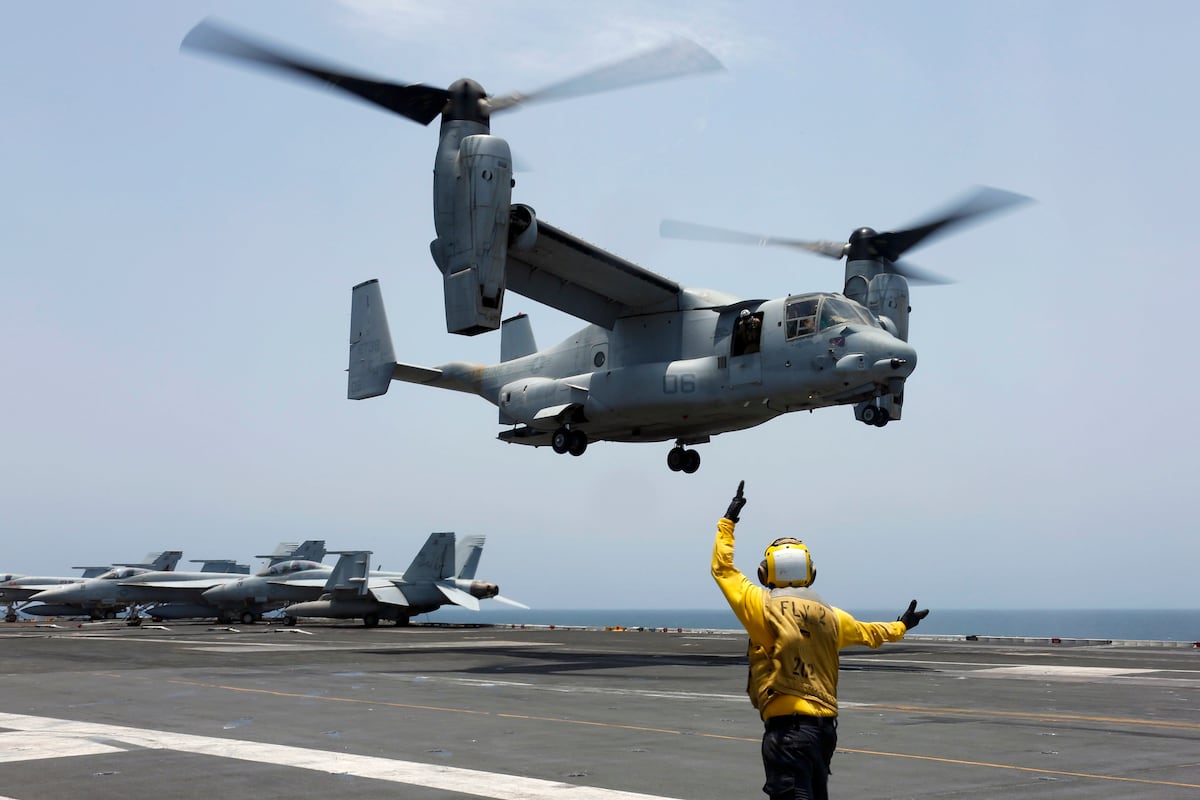The Navy and Air Force are now cleared to resume flying their grounded V-22 Ospreys after conducting inspections on a crucial gearbox in the tiltrotor aircraft, and some are already back in the air.
The military temporarily stopped flying some Ospreys on Dec. 9 after a near crash in New Mexico in November. The Marines soon resumed its Osprey flights, but the Navy and Air Force kept them on the ground longer while they further reviewed what was causing metal components to fail.
Naval Air Systems Command, or NAVAIR, issued a bulletin to the fleet Friday morning ordering crews to verify how many hours each aircraft’s proprotor gearbox had flown.
If an Osprey’s gearbox meets or exceeds a particular number of flight hours — NAVAIR would not say how many due to operational security concerns — it can resume flying under limitations issued in March.
But if the gearbox is found to have fewer flight hours, it will have to fly under a new and stricter set of limitations, Air Force Special Operations Command Spokeswoman Lt. Col. Becky Heyse told Defense News. Heyse said the groundings were not absolute, and some Ospreys kept flying to conduct necessary operations.
The fatal crash of an Air Force CV-22 near Japan in November 2023 was caused by a cracked gear, which had impurities called inclusions that weakened the metal. Similar metal weaknesses may have also caused the near crash near Cannon Air Force Base last month.
Osprey manufacturer Bell is working with the V-22 Joint Program Office to upgrade some of the aircraft’s gears to make those weakening impurities less common.
But that will take some time to roll out, Heyse said, and the military had to find a way to get its Ospreys back in the air in the meantime.
“It’s really important we don’t keep these aircraft grounded,” Heyse said. “This allows us to fly and keep pilot proficiency while a longer-term fix is put in place.”
Studies of the Osprey have shown that when those impurities cause gear cracks, Heyse said, it typically happens in their early life. Once they have flown a certain number of hours and are “broken in,” she said, they are less likely to crack and the military is more confident in them. That is why the Ospreys under the flight hour threshold must adhere to the more conservative restrictions, she said.
The stricter guidelines for those Ospreys will stay in place until their gearboxes are upgraded, or they exceed the flight hour threshold, NAVAIR said.
Air Force Special Operations Command had already been inspecting some aircraft before today and verifying how many flight hours their gearboxes had, according to Heyse. Those Ospreys are already flying, she said.
The inspection process for each aircraft doesn’t take long, she said.
The military declined to say how many Ospreys are affected by these changes, and what their additional flight restrictions are, for security reasons.
The Marine Corps has by far the most Ospreys in its fleet, at about 350. The Air Force has about 52 Ospreys, and the Navy has roughly 30.
Stephen Losey is the air warfare reporter for Defense News. He previously covered leadership and personnel issues at Air Force Times, and the Pentagon, special operations and air warfare at Military.com. He has traveled to the Middle East to cover U.S. Air Force operations.
Read the full article here
